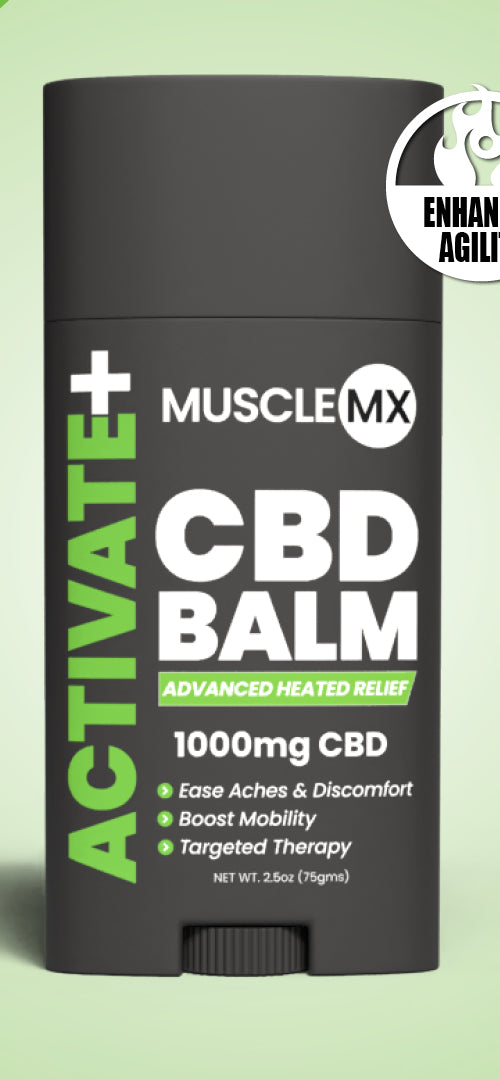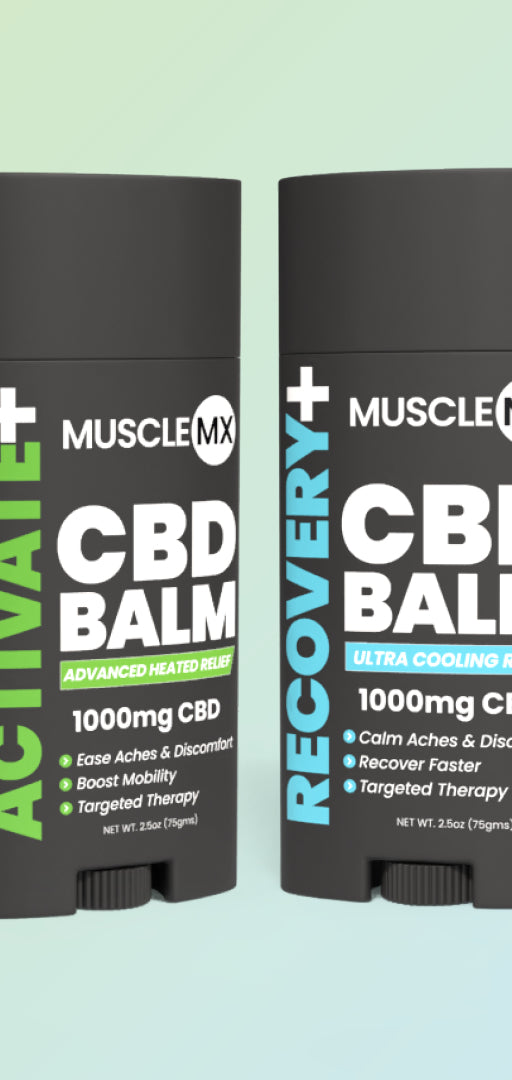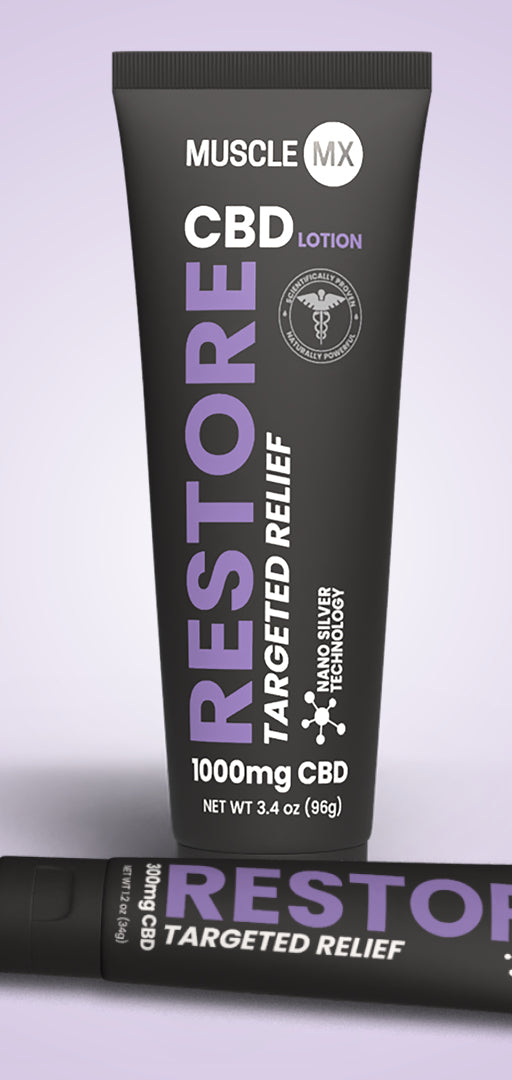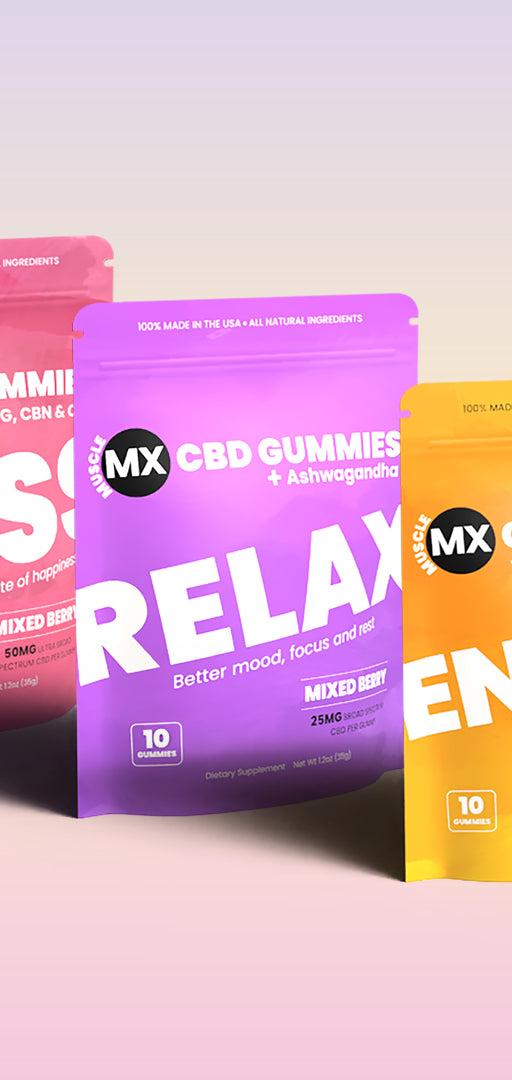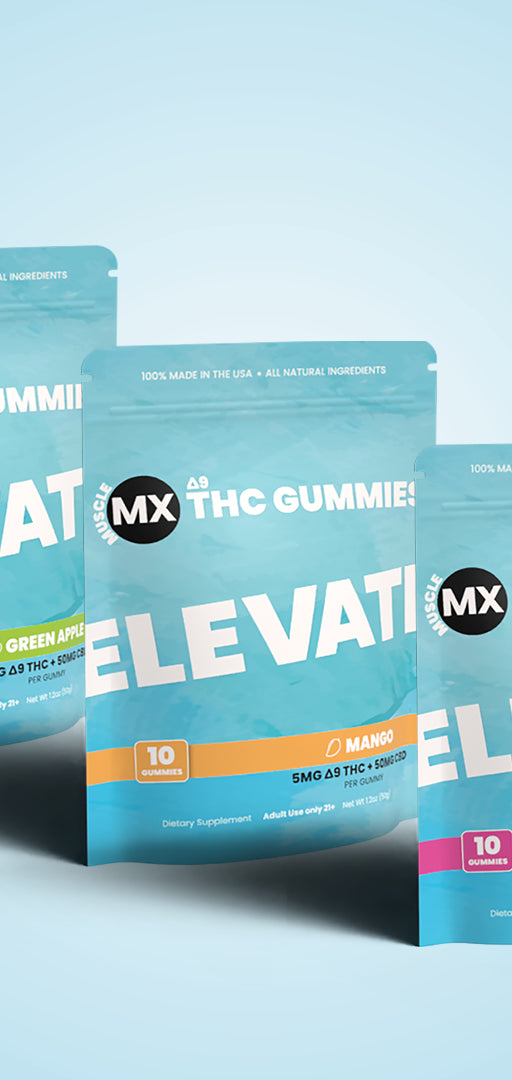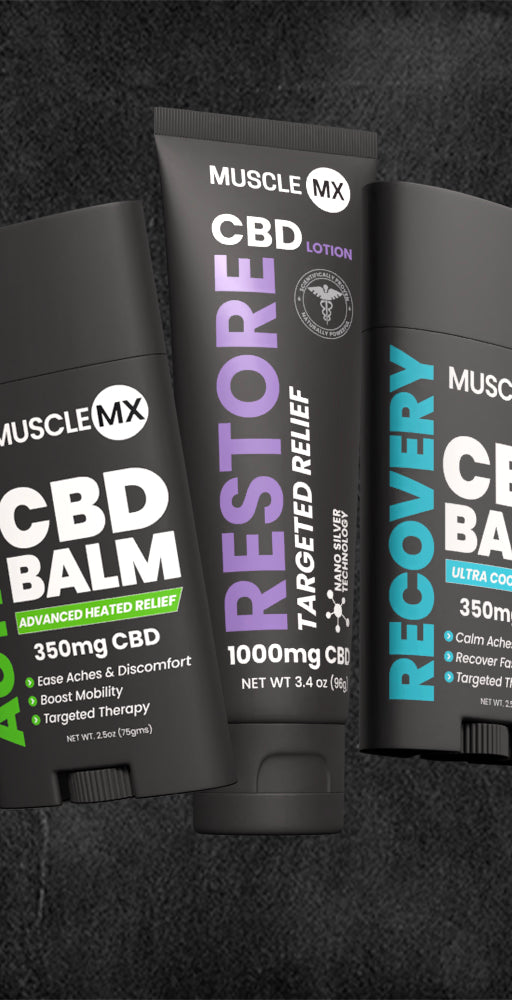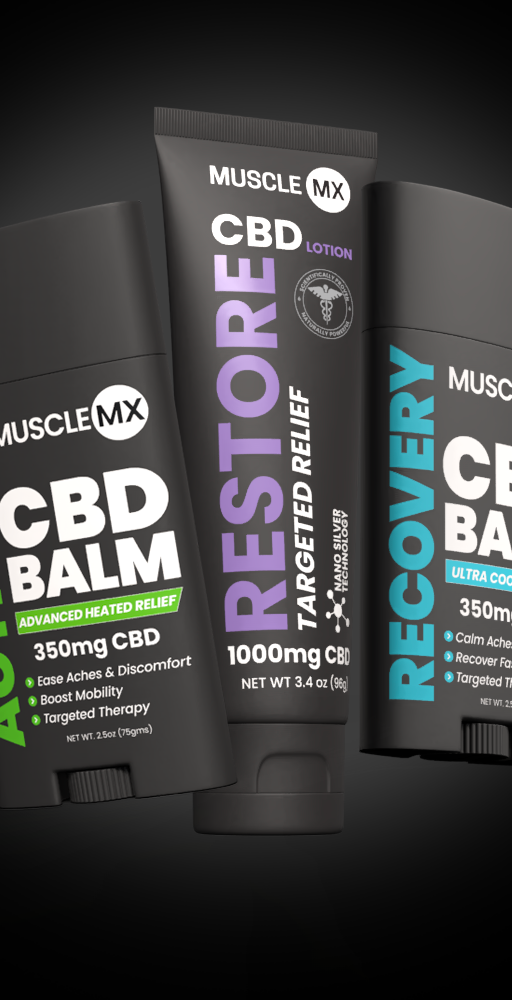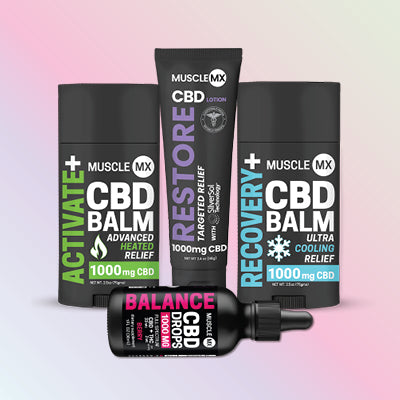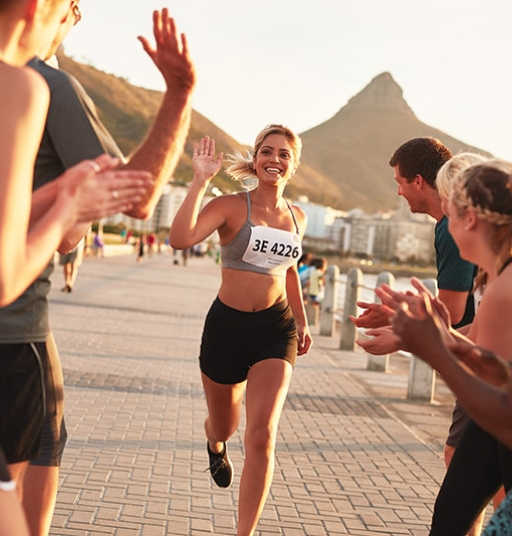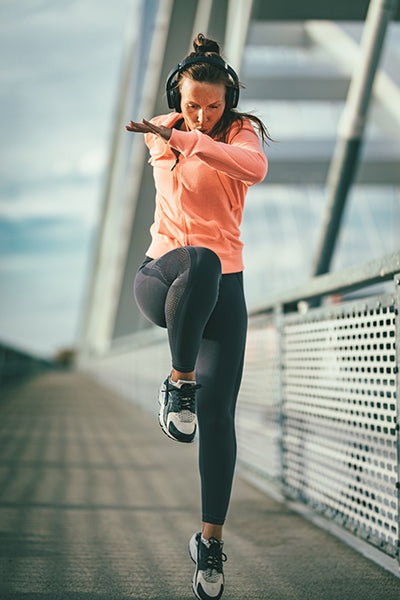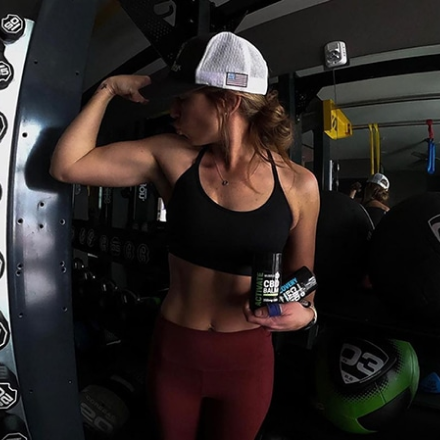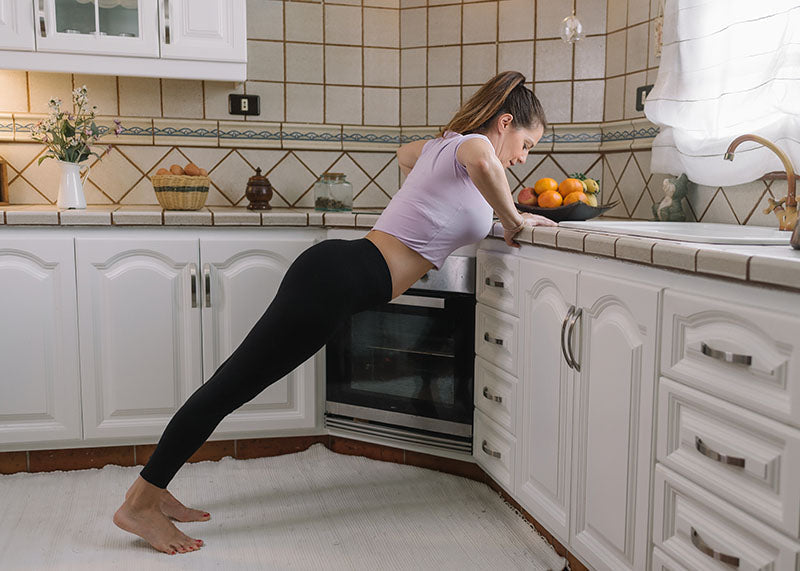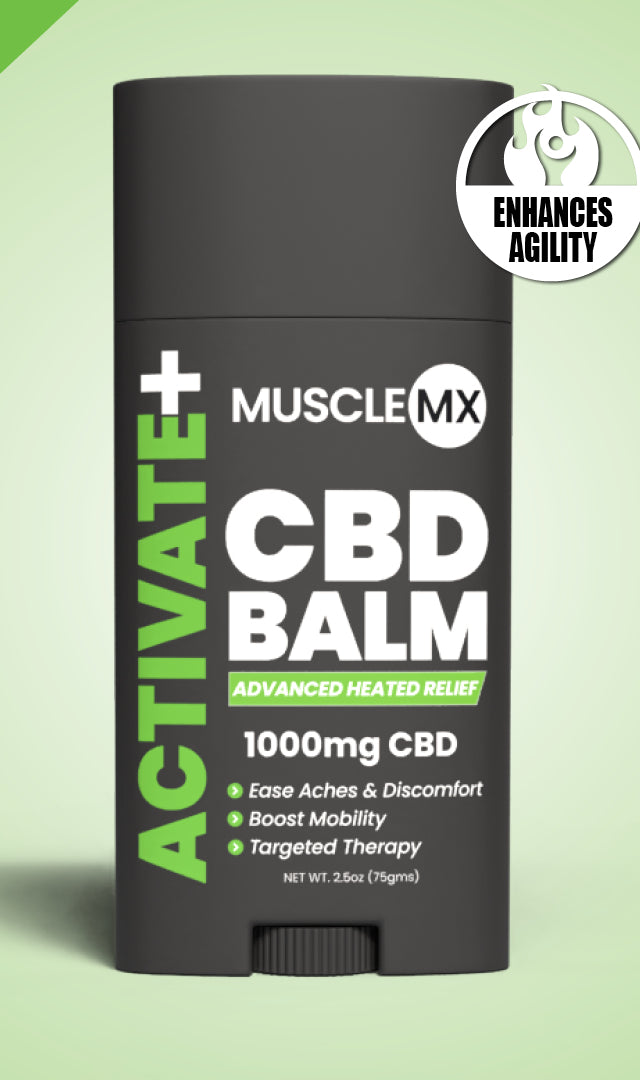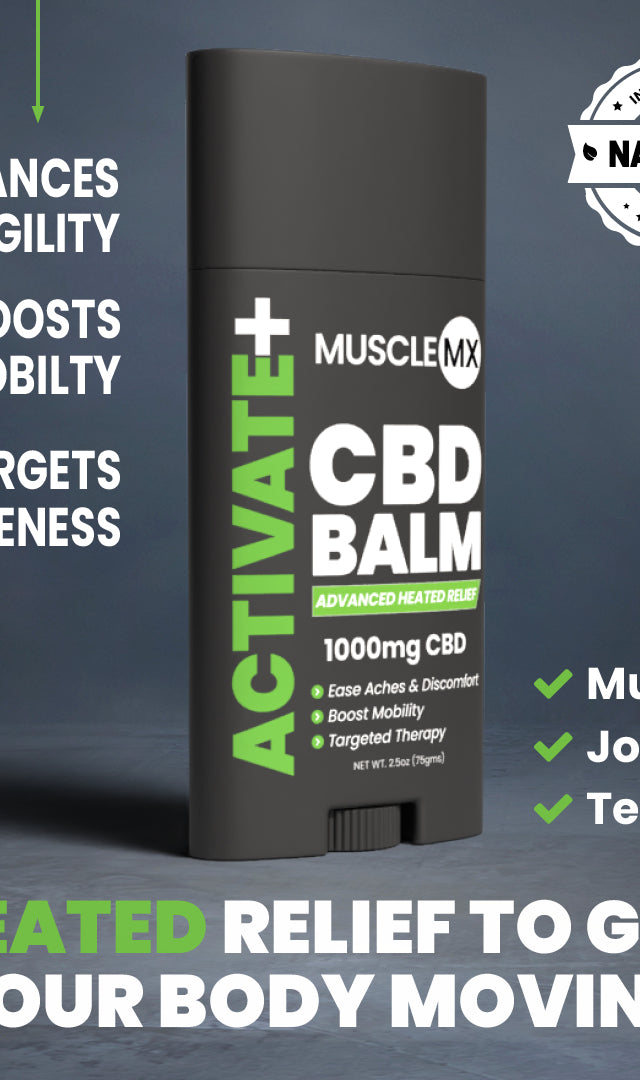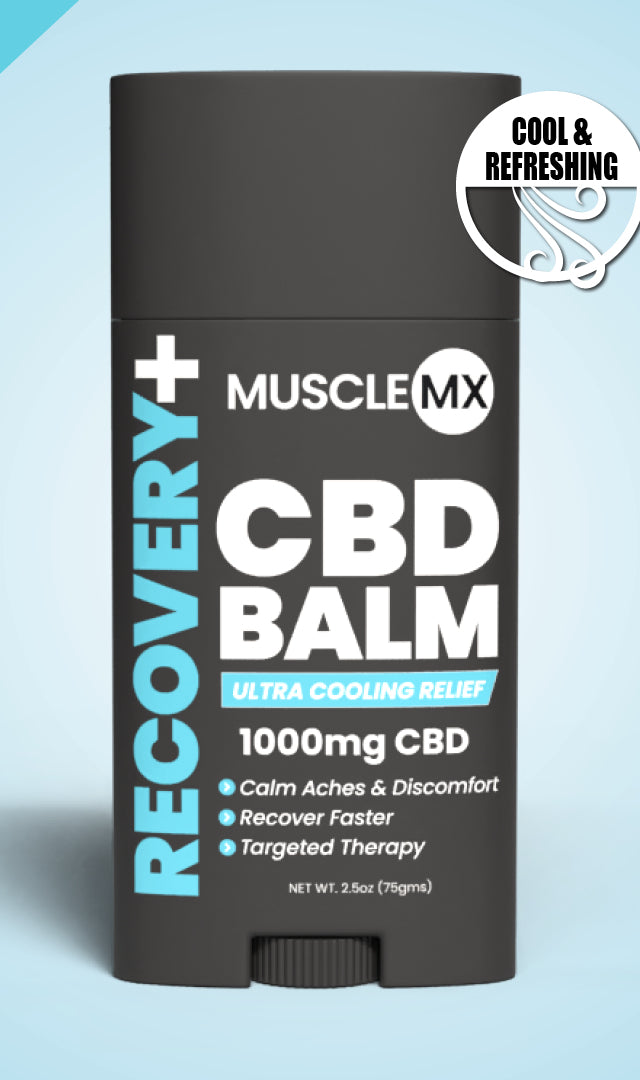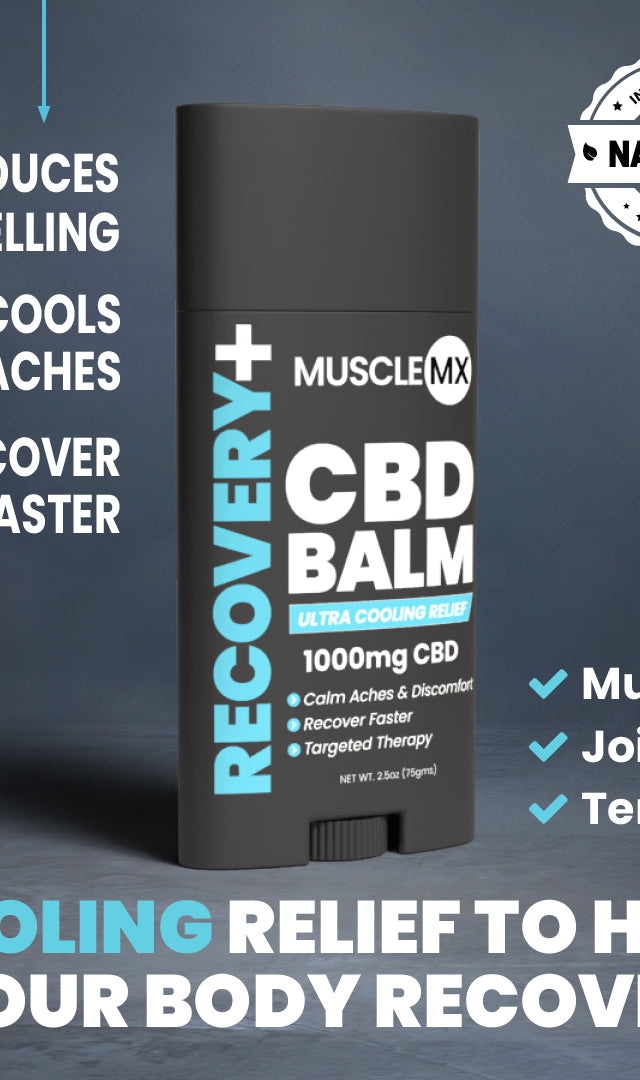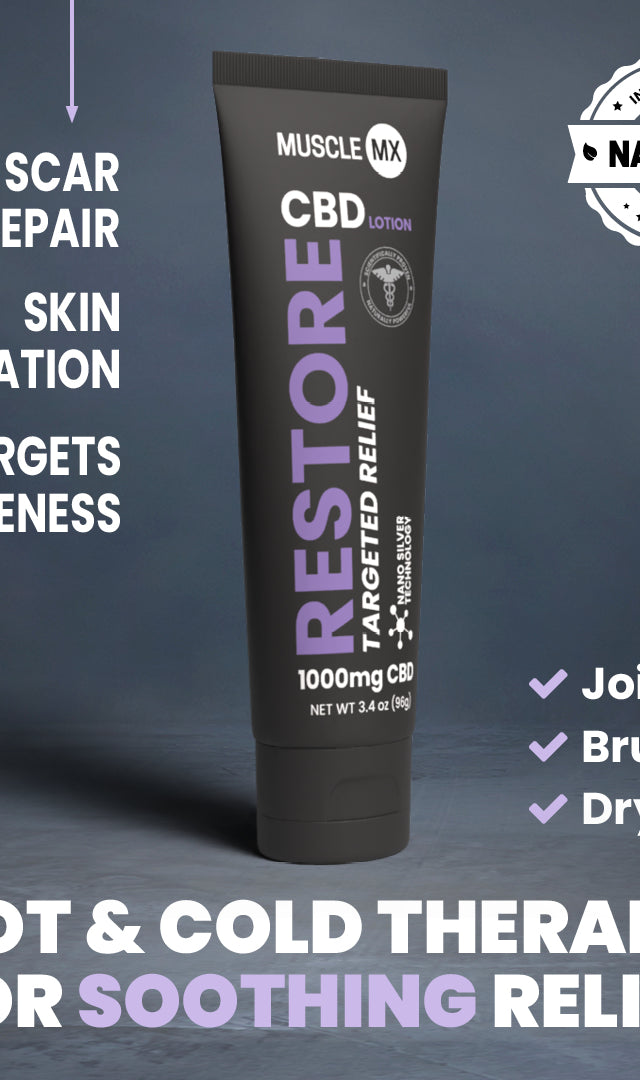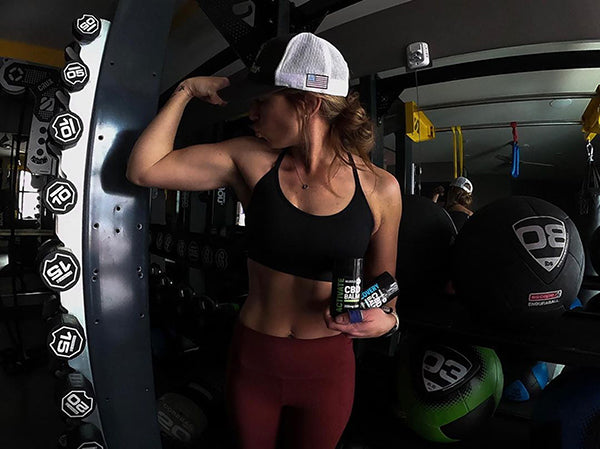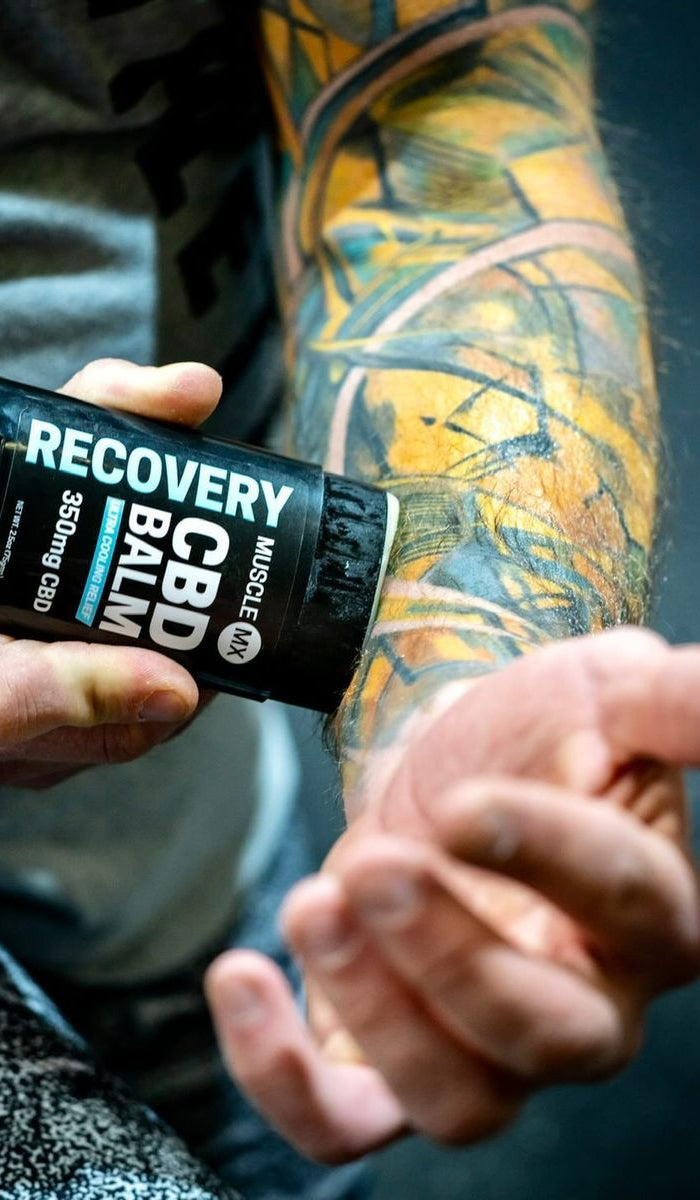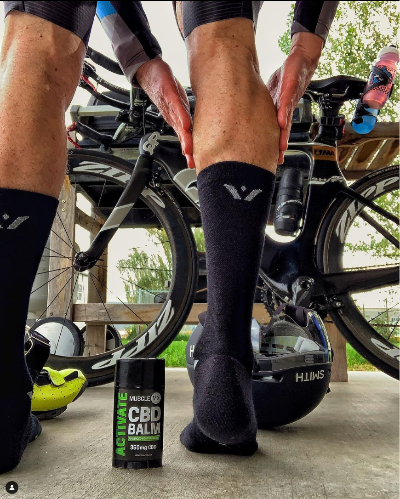5 Quick Holiday Stress Relief Exercises That Actually Work
Key Takeaways
Transform your holiday stress into strength with these five simple exercises that seamlessly integrate into your daily routine, requiring no special equipment or dedicated workout time.
-
Kitchen multitasking works: Perform calf raises while stirring sauces and counter push-ups during baking waits to strengthen muscles and release mood-boosting endorphins.
-
Turn chores into workouts: Do squats while folding laundry and wall sits during phone calls to build functional strength while managing daily tasks.
-
Micro-movements create macro-benefits: Even 1-minute stair climbing bursts between activities significantly improve cognitive performance, energy levels, and overall mood.
-
Consistency beats intensity: Small, frequent movement breaks throughout your day provide more stress relief than waiting for perfect workout conditions.
-
Exercise is accessible everywhere: Your kitchen counter, staircase, walls, and laundry room become wellness opportunities rather than just functional spaces.
The beauty of these exercises lies in their simplicity—they transform ordinary holiday activities into stress-busting opportunities. By incorporating movement into existing routines, you'll naturally elevate your mood, strengthen your body, and create mindful breaks from seasonal chaos without sacrificing precious time.
Introduction
Holiday stress — it's that familiar weight that settles on your shoulders somewhere between the first holiday commercial and New Year's Day. You're not alone in feeling overwhelmed when 62% of us admit to "indulging and eating what we want" during the festive season. If you're among the 20% who find themselves reaching for that extra glass of wine during this time of year, you know exactly what we mean by celebration overload.
Here's something that might surprise you: therapists actually consider the holidays a significant stress factor. If you visit a therapist within three months of the holidays, you're at higher risk for stress-related illnesses than at other times of the year. But before you start worrying about your holiday plans, there's genuinely good news. Exercise can be your ally during this hectic season. When you move your body, even briefly, you're triggering the release of endorphins that naturally lift your mood and support your overall well-being.
That's exactly why we've gathered these five quick holiday stress relief exercises that fit seamlessly into your already packed schedule. Whether you're stirring gravy or folding laundry, these simple movements require just minutes of your time but deliver real benefits for both your body and mind. Remember, pairing these exercises with quality sleep (seven to nine hours nightly) creates a foundation for navigating the most wonderful — and yes, sometimes most stressful — time of the year with greater ease.
Calf Raises in the Kitchen
The kitchen becomes your command center during the holidays — and it's also the perfect place for your first stress-relief exercise. While you're already spending hours preparing festive meals, why not turn that time into an opportunity to support your body and mind? Calf raises are remarkably simple yet effective, requiring no equipment while delivering real benefits for both your physical health and mental well-being.
What Makes Calf Raises Work
Understanding proper calf raise technique helps you get the most from every movement while protecting your body from injury. This straightforward exercise targets your gastrocnemius and soleus muscles — the two main powerhouses in your calves that support you throughout each day.
Here's how to perform calf raises correctly in your kitchen:
- Stand with your feet hip-width apart near a counter or wall for balance if needed
- Keep your shoulders relaxed and arms by your sides (or lightly touching the counter)
- Engage your core muscles to maintain proper alignment
- Press through the balls of your feet to lift your heels as high as possible
- Hold the raised position briefly, focusing on squeezing your calf muscles
- Lower your heels slowly and with control
For beginners, we recommend starting with 3 sets of 10 repetitions, resting about 2 minutes between sets. As your strength builds, you can explore more challenging variations:
-
Single-leg calf raises: Lift one foot off the floor while performing the exercise with the other leg
-
Internal/external foot positioning: Turn your feet slightly inward or outward (to the 10 and 2 o'clock positions) to target different parts of your calf muscles
-
Added resistance: Hold a kitchen item like a can of beans or bottle of water for increased difficulty
Throughout each movement, focus on keeping your ankles, knees, and hips properly aligned to protect your joints. Counting aloud while you exercise helps maintain awareness of your form and ensures you're moving at the right pace.
Perfect Timing for Kitchen Calf Raises
The beauty of calf raises lies in how naturally they fit into your existing kitchen routine. You don't need to stop what you're doing — instead, these exercises blend seamlessly into your holiday preparations.
Consider doing calf raises during these kitchen moments:
- While stirring sauces, gravies, or batters
- During recipe reading or meal planning
- When searching for ingredients in cupboards
- While waiting for water to boil or timers to go off
- Between cooking tasks as a quick break
You can adjust the intensity based on your energy level and available time. For a more focused session, try completing 20 repetitions for 3 sets while stirring gravy or sauce. Or simply rise onto the balls of your feet whenever possible during kitchen activities.
Another effective approach involves incorporating calf raises into your natural movement patterns — rising onto your toes as you move between cooking stations. This turns ordinary kitchen tasks into strengthening opportunities without adding extra time to your schedule.
Why Calf Raises Help With Holiday Stress
Beyond strengthening your lower legs, calf raises offer several advantages that directly address holiday stress. Most importantly, they create a mindful moment that helps you reconnect with your body amid the holiday chaos.
The physical benefits include:
- Strengthening the gastrocnemius and soleus muscles
- Improving ankle stability and balance
- Activating deeper stabilizer muscles that support foot arches
- Enhancing explosive power and movement efficiency
From a stress-relief perspective, calf raises provide unique holiday benefits:
-
Mind-body connection: Focusing on controlled movement temporarily shifts your attention away from holiday pressures
-
Better circulation: The pumping action helps move blood through your lower legs, especially beneficial after long periods of standing
-
Posture support: Stronger calves contribute to better overall posture, reducing physical tension that can worsen stress
-
Natural mood boost: Even brief exercise sessions trigger endorphin release for mood enhancement
Research shows that home-based calf-raise exercises performed with intent to move rapidly can significantly enhance neuromuscular capacity. This improvement in functional strength helps maintain mobility and independence — particularly valuable during the physically demanding holiday season.
What makes this exercise especially practical is its discreteness. You can perform calf raises while maintaining conversations with family members or guests, turning kitchen time into wellness time without anyone even noticing. It's multitasking at its finest — preparing holiday meals while simultaneously strengthening your body and managing stress.
Counter Push-Ups While Baking
Your holiday baking sessions just got a wellness upgrade. Counter push-ups offer the perfect blend of upper body strengthening and stress relief, all while your cookies are in the oven. This simple exercise requires nothing more than your kitchen counter and a few spare minutes between baking tasks.
Counter push-up form
Getting your form right ensures you'll reap the full benefits while keeping your body safe. Counter push-ups provide a more accessible alternative to traditional floor push-ups, making them suitable for various fitness levels.
Here's how to perform counter push-ups correctly:
- Stand about one foot away from your kitchen counter
- Pick a clear section without utensils or equipment that might fall
- Lean forward and place your palms on the counter, slightly wider than shoulder-width apart
- Position yourself at approximately a 45-degree angle with your body
- Breathe in as you bend your elbows, bringing your chest closer to the counter
- Keep your core engaged and head aligned with your spine
- Breathe out as you push away from the counter until your arms are straight
- Repeat 5-10 times per set, aiming for 10-15 repetitions
Keep your abdominal muscles engaged throughout the movement to maintain a neutral spine position. Your hands and feet should stay planted in the same spot during the entire exercise. If you're new to this movement, wall push-ups might be a gentler starting point before progressing to the counter version.
Avoid bending your elbows so deeply that you feel discomfort in the front of your shoulders. Kitchen counters provide the stability you need — stick with countertops rather than tables or chairs that might not offer the same support.
Best times to do counter push-ups
The beauty of counter push-ups lies in how naturally they fit into your holiday baking routine. You don't need to interrupt your cooking flow to squeeze in this quick exercise.
Perfect moments for counter push-ups include:
- While waiting for cookies to bake in the oven
- During those few minutes when your microwave is heating something
- As sauces reduce or pasta cooks
- Between washing dishes
- In that brief window after sliding cookie sheets into the oven
Even a quick set of 10 repetitions takes less than a minute but delivers meaningful benefits. You're essentially turning those inevitable waiting moments into opportunities for physical wellness without missing a beat in your holiday preparations.
Try this practical approach: perform one set of counter push-ups every time you set a kitchen timer. This creates a natural reminder system that connects your stress-relief exercise to your regular baking activities. The microwave countdown works perfectly too — most heating cycles last 60-90 seconds, which gives you just enough time for a complete set.
Upper body benefits of counter push-ups
Counter push-ups do much more than fill time between baking tasks. They deliver real physical and mental benefits that become especially valuable during the demanding holiday season.
Physically, counter push-ups strengthen several important upper body muscle groups:
-
Chest muscles (pectoralis major and minor)
-
Shoulder muscles (anterior deltoids)
-
Triceps (backs of arms)
-
Core muscles when you maintain proper form
These strength gains translate directly into everyday activities. The same muscles you're working help with lifting grocery bags, carrying holiday decorations, or maneuvering shopping carts. Counter push-ups also provide weight-bearing exercise for your wrists, which can help maintain bone density in that area.
From a stress-relief perspective, counter push-ups offer distinct advantages:
- They create a moment of physical awareness that shifts your focus away from holiday pressures
- The controlled, rhythmic movement encourages mindful breathing
- Physical activity naturally triggers endorphin release, boosting your mood
- Successfully completing exercise goals builds confidence and self-efficacy
- Their accessibility means almost anyone can experience success, reducing exercise-related anxiety
If traditional floor push-ups feel challenging, counter push-ups serve as an excellent entry point. You're still working with approximately 20-25% of your bodyweight, which provides meaningful resistance. As your strength improves, you can progress to lower surfaces like chairs before eventually working up to floor push-ups.
From a functional standpoint, counter push-ups work similarly to a decline bench press, emphasizing the lower portion of your chest while requiring less shoulder mobility than standard push-ups. This makes them particularly suitable for those with shoulder sensitivity or anyone building upper body strength from the ground up.
What's particularly wonderful about incorporating these exercises into your baking routine is the positive association you're creating. Instead of viewing holiday food preparation as just another stressor, you're transforming these moments into opportunities for both physical and mental wellness — exactly when you need it most.
Squats While Doing Laundry
Laundry has a way of multiplying during the holidays, doesn't it? Between extra guests, festive outfits, and increased cooking activities, that hamper seems to overflow faster than usual. Instead of viewing this endless cycle of washing and folding as another stressor, consider it your opportunity to strengthen your body while you tackle those household tasks.
Squats transform ordinary laundry time into a powerful workout that targets multiple muscle groups simultaneously. This fundamental movement works your quads, glutes, hamstrings, and core — making it one of the most efficient exercises you can do between loads.
Proper squat technique
Understanding proper form ensures you'll get the most benefit from your laundry-time squats while protecting your joints from strain. A well-executed squat is surprisingly simple, yet it engages numerous muscle groups throughout your lower body and core.
To perform a basic squat correctly:
- Start with your feet slightly wider than hip-width apart, with toes pointed slightly outward
- Stand up tall with shoulders back and chest lifted slightly
- Engage your core muscles by drawing your navel toward your spine
- Hinge at your hips first, then bend your knees as you lower yourself down
- Lower your body as if sitting in an invisible chair behind you
- Keep your chest up, back straight, and weight in your heels
- Make sure your knees track in line with your toes, not caving inward
- Lower yourself until your thighs are parallel to the floor (or as deep as comfortable)
- Push through your heels to stand back up, squeezing your glutes at the top
- Avoid locking your knees at the top position
Maintaining a neutral spine throughout the movement is essential — avoid rounding forward or arching excessively backward. This protects your lower back and ensures you're targeting the intended muscles effectively. If you're new to squats, start with 10-15 repetitions for three sets, taking brief rest periods between sets.
How to integrate squats into chores
Your laundry routine naturally creates perfect moments for squats without disrupting your household flow. These everyday tasks become opportunities to strengthen your body while you complete necessary chores.
Here are practical ways to incorporate squats into your laundry activities:
-
Loading/unloading the washer or dryer: Rather than bending at the waist when transferring clothes, perform a proper squat each time you reach down. This approach protects your back while engaging your leg muscles.
-
Folding clothes: Position your laundry basket on the floor instead of a table. Each time you need to pick up an item to fold, complete a full squat down and back up. One participant in an 8fit Challenge suggested adding a squat for each dish or glass being put away — the same principle applies perfectly to folding laundry items.
-
Sorting laundry: Perform a squat for each piece of clothing you sort instead of bending over the basket. This turns the sorting process into an effective strength session.
-
Putting away clothes: When storing items in lower drawers or shelves, squat down rather than bend to place folded items.
-
Picking up clothes: Whether gathering clothes from the floor or collecting scattered items (especially common with children's clothing), use a squat motion instead of bending over.
For those wanting more intensity, try jump squats while doing laundry. From the lowest squat position, explode upward into a jump with arms reaching toward the ceiling. This plyometric variation increases both intensity and calorie burn. Begin with 3 sets of 10 repetitions, resting briefly between sets.
Another effective strategy involves combining tasks — grab one item, do one squat, then place the item in its proper location. This creates a natural rhythm that weaves exercise seamlessly into your chore routine.
Stress relief benefits of squats
Beyond the obvious physical advantages, squats provide remarkable stress-relieving properties that make them especially valuable during the busy holiday season. These benefits extend far beyond muscle strengthening to include meaningful psychological advantages.
The stress-relief benefits of squats include:
-
Endorphin release: Squats trigger the release of endorphins, which are natural mood elevators that reduce stress and enhance emotional well-being. This biochemical response creates a natural sense of satisfaction and calm.
-
Reduced muscle tension: Regular squat movements help improve mobility and decrease muscle tension throughout your body. Since tension often builds up during stressful periods, this benefit becomes particularly relevant during holiday season.
-
Improved posture: Stronger lower body muscles support better overall posture, which can reduce physical stress manifestations. Poor posture frequently contributes to tension headaches and back discomfort.
-
Enhanced circulation: The pumping action of squats increases blood flow throughout your body, delivering oxygen and nutrients more efficiently to your tissues.
-
Mindful practice: Concentrating on proper squat form creates a mindful break from holiday stressors, giving your mind a temporary respite from worry.
From a physical standpoint, squats work multiple muscle groups at once, making them highly time-efficient. This compound movement strengthens your quads, glutes, hamstrings, and core, building functional strength that improves performance in daily activities.
Squats also strengthen tendons, ligaments, and bones, potentially reducing your risk of injury — a valuable benefit during the physically demanding holiday season. A 155-pound person can burn approximately 223 calories during 30 minutes of vigorous strength training exercises like squats, which can help offset some of those holiday treats.
The next time holiday stress begins to mount, head to your laundry room. You'll not only complete a necessary household task but also engage in a proven stress-reduction technique that strengthens your body and calms your mind simultaneously.
Wall Sits During Phone Calls
Phone calls — they seem to multiply during the holiday season, don't they? Whether you're coordinating dinner plans with relatives or trying to schedule that annual catch-up with old friends, these conversations can eat up significant chunks of your day. Rather than spending this time passively sitting or pacing around your living room, wall sits offer a perfect opportunity to combine communication with movement. This quiet, stationary exercise works beautifully during calls since it won't leave you breathless or interrupt your conversation flow.
How to do wall sits correctly
Getting your wall sit form right ensures you'll get the most benefit for both muscle strengthening and stress management. The technique is straightforward, but attention to detail makes all the difference.
To perform a wall sit correctly:
- Stand with your back flat against a sturdy wall and feet hip-distance apart
- Step your feet forward approximately 18 to 24 inches
- Slide down the wall into a squat position where your thighs become parallel to the floor (like sitting in an invisible chair)
- Ensure your knees align with your hips and don't extend past your toes
- Engage your core muscles while pressing your back into the wall
- Keep the back of your head against the wall – avoid "text neck" by holding your phone up to meet your gaze
- Hold this position for at least 30 seconds at a time, or as long as you can maintain comfortably
- Between wall sits, stand upright, take a few deep breaths, and repeat
Starting out? Don't worry if holding the position with your thighs parallel to the floor feels too challenging. Simply slide down the wall until you feel a manageable effort you can sustain for at least 30 seconds. Your strength will improve with practice, allowing you to achieve deeper sits over time.
Here's something reassuring: wall sits are not bad for your knees—they actually strengthen the muscles supporting the knee joint. They can also improve joint mobility and increase flexibility.
Why wall sits work so well for stress
What makes wall sits particularly effective for holiday stress relief? Several factors come together to create a surprisingly powerful stress-busting exercise.
Wall sits engage multiple muscle groups at once, including your glutes, hamstrings, quads, and core. This muscle activation creates that natural mood boost we've been talking about throughout these exercises.
The mental benefits are equally important. Focusing on maintaining proper form temporarily shifts your attention away from whatever holiday stressor might be weighing on your mind. You're essentially creating a mental break while still being productive during your phone conversation.
The physical benefits of wall sits extend beyond stress relief:
-
Core strength improvement: Your core muscles work actively during wall sits, supporting your spine and potentially reducing lower back tension
-
Better balance: Wall sits improve the communication between your muscles and brain, enhancing coordination
-
Improved posture: Regular practice helps counteract "text neck" and other posture issues common during phone use
-
Blood pressure management: Research shows wall sits can help support healthy blood pressure
Perhaps most importantly, wall sits build mental resilience alongside physical endurance. Holding this challenging position while your muscles shake and your heart rate increases develops psychological strength that carries over into handling holiday pressures.
When to incorporate wall sits into your day
Phone calls create ideal moments for wall sits because they typically require minimal movement and focus primarily on conversation. Consider trying wall sits during:
- Those lengthy family coordination calls
- Time spent on hold with customer service
- Conference calls that don't require note-taking
- Catch-up conversations with relatives you haven't spoken with recently
- Holiday planning discussions with friends
Even with a packed holiday schedule, aim to find at least four minutes for movement a few times weekly. Start with holding wall sits for 15-30 seconds, completing 2-3 repetitions per session. As you build strength, gradually work toward longer holds.
There's also a research-backed approach worth considering: four wall sits, each lasting two minutes, followed by two-minute rests, performed three times weekly. This complete session takes just 14 minutes (8 minutes of wall sits, 6 minutes of rest).
The beauty of wall sits lies in their simplicity. You don't need special equipment—just a wall. You can perform them almost anywhere: against your office wall, in a doorway, or even against your vehicle if you're frequently on the road.
When you consciously pair wall sits with phone calls, you're creating an automatic stress management system. Each incoming call becomes a gentle reminder to incorporate this movement into your day, turning potentially stressful communications into opportunities for both physical strengthening and mental wellness.
Stair Climbing Between Tasks
Have you ever looked at your staircase as just a way to get from one floor to another? That architectural feature in your home might actually be your secret weapon against holiday stress. Research shows that brief stair climbing sessions provide immediate psychological benefits and serve as a promising tool to combat physical inactivity.
Between wrapping gifts and preparing holiday meals, your stairs offer something most other exercises can't — convenience and immediate accessibility.
Stair Climbing Technique
Getting the most from stair climbing doesn't require special training, but proper technique can make a real difference. Even tower running champions rely on specific methods to maximize their efficiency:
- Plant your entire foot perpendicularly on each step, not just your toes
- For increased speed and power, push off from the inner edge of each step
- Keep your eyes ahead rather than looking down at your feet
- Maintain a slight forward lean as you climb
- Pump your arms naturally to add momentum
Remember, handrails exist primarily for balance assistance — use them if you need stability, but focus on maintaining upright posture when possible. The beauty of stair climbing lies in its accessibility. Start with what feels manageable, perhaps one or two flights, and gradually increase as your body adapts.
How Stair Climbing Boosts Mood
What makes stair climbing particularly effective for holiday stress relief? The answer lies in both immediate and lasting benefits that extend far beyond physical fitness.
Studies show that participants who climbed stairs performed better on cognitive switching tasks and reported feeling more energetic and happier compared to control groups. Even six 1-minute bursts of stair climbing improved both cognitive performance and mood.
The rhythmic, repetitive movement involved in climbing stairs helps calm the mind, promoting an almost meditative state similar to mindfulness practices. This focused attention on movement and breathing temporarily disconnects your mind from holiday worries.
Your brain benefits directly from this activity too. Stair climbing increases blood flow to the brain, which enhances cognitive function, including memory and learning abilities. Researchers found that participants who climbed stairs more intensely showed faster responses on cognitive tests.
Fitting Stair Climbs Into Your Routine
Incorporating stair climbing into your holiday schedule doesn't require major time commitments. Research indicates that even brief bursts — as short as 1-minute intervals repeated throughout the day — provide significant benefits.
Consider these practical approaches:
- Take a three-minute stroll up and down the stairs after holiday meals to help control blood sugar
- Climb a flight whenever you need to mentally reset between tasks
- Use stair climbing as a mini-break during extended gift wrapping sessions
- Transform waiting time (for cookies to bake or water to boil) into brief stair sessions
For a more structured approach, try the research-backed protocol of six 1-minute stair climbing intervals with 1-minute rest periods in between. This approach takes just 11 minutes yet produces measurable cognitive and mood improvements.
Beginners can start by walking up 20 floors throughout the day, distributed across several sessions. As your fitness improves, challenge yourself by taking two steps at a time or incorporating brief speed intervals.
The best part? You don't need fancy equipment — just a staircase. Indoor stair climbing eliminates weather concerns that might otherwise prevent outdoor physical activity. These brief climbing sessions create a natural break from holiday chaos without requiring a significant time commitment.
Comparison Table
Now that we've explored each of these holiday stress-busters, here's a quick reference guide to help you choose the right exercise for any moment during your busy season. This comparison makes it easy to see which movements work best for your current activity and available time.
|
Exercise
|
Basic Technique
|
Recommended Sets/Duration
|
Primary Muscles Targeted
|
Best Times to Perform
|
Key Benefits for Stress Relief
|
|
Calf Raises in the Kitchen
|
Stand with feet hip-width apart, press through balls of feet to lift heels, hold briefly, lower slowly
|
3 sets of 10 repetitions, 2-minute rest between sets
|
Gastrocnemius and soleus muscles
|
While stirring, reading recipes, waiting for water to boil
|
Improves mind-body connection, enhances circulation, reduces physical tension
|
|
Counter Push-Ups While Baking
|
Stand 1 foot from counter, hands shoulder-width apart, 45-degree angle, lower chest to counter and push back up
|
5-10 reps per set, 10-15 repetitions total
|
Chest muscles, shoulder muscles, triceps, core
|
While waiting for cookies to bake, during microwave heating, between washing dishes
|
Creates physical awareness, promotes mindful breathing, triggers endorphin release
|
|
Squats While Doing Laundry
|
Feet wider than hip-width, lower as if sitting in chair, keep chest up and back straight
|
10-15 repetitions for three sets
|
Quads, glutes, hamstrings, core
|
During loading/unloading laundry, folding clothes, sorting items
|
Releases endorphins, reduces muscle tension, improves posture
|
|
Wall Sits During Phone Calls
|
Back against wall, slide down until thighs parallel to floor, knees aligned with hips
|
Hold for 30 seconds minimum, 2-3 repetitions per session
|
Glutes, hamstrings, quads, core
|
During lengthy family calls, while on hold, during conference calls
|
Triggers endorphin release, improves mind-body connection, builds mental toughness
|
|
Stair Climbing Between Tasks
|
Plant entire foot on each step, maintain slight forward lean, pump arms naturally
|
Six 1-minute bursts with 1-minute rest periods
|
Full body movement
|
Between tasks, after meals, during cooking wait times
|
Enhances mood, promotes meditative state, increases cognitive function
|
Final Thoughts
Movement can be your secret weapon against holiday stress. These five simple exercises — calf raises in the kitchen, counter push-ups while baking, squats during laundry, wall sits on phone calls, and stair climbing between tasks — show you that wellness doesn't require a gym membership or extra hours in your day.
What makes these exercises special isn't just their convenience. Each one works with your existing routine, turning everyday moments into opportunities for both physical strength and mental relief. Your kitchen counter becomes a place for push-ups. Your staircase transforms into a mood booster. Even folding laundry can support your well-being.
The science backs up what you'll feel: brief movement sessions release endorphins that naturally elevate your mood while giving your mind a break from holiday overwhelm. Your body gets the circulation and tension release it craves during this demanding season.
Holiday stress doesn't have to win. Many people believe they lack time for self-care, but these micro-movements prove that even one minute of intentional activity can shift your mental state. Whether you're stirring sauce or waiting for cookies to bake, you now have tools to support both your body and mind.
Remember, consistency matters more than perfection. Small moments of movement throughout your day create meaningful stress relief. Your home spaces now offer wellness opportunities rather than just places for chores.
This holiday season, you have the power to choose movement over stress. Your body and mind will thank you as you navigate the festivities with greater calm and energy. Understanding these simple techniques gives you the foundation to make this holiday season not just manageable, but genuinely enjoyable.
FAQ's About Holiday Stress Relief Exercises
Q: What are some quick and effective stress-busting exercises for the holidays?
A: The article outlines five exercises that can be easily incorporated into your holiday routine: calf raises in the kitchen, counter push-ups while baking, squats while doing laundry, wall sits during phone calls, and stair climbing between tasks. These exercises provide both physical and mental benefits to help manage holiday stress.
Q: How can I incorporate exercise into my busy holiday schedule?
A: You can integrate exercise into your daily activities without dedicating extra time. For example, do calf raises while cooking, perform counter push-ups during baking breaks, or climb stairs between tasks. These micro-exercises can be done in short bursts throughout the day, making them perfect for a busy holiday schedule.
Q: What are the benefits of doing these exercises during the holiday season?
A: These exercises offer multiple benefits, including stress relief, improved mood through endorphin release, enhanced physical strength, better posture, and increased mental focus. They also provide brief mental breaks from holiday chaos and can help offset some of the extra calorie intake common during festive periods.
Q: Are these exercises suitable for beginners?
A: Yes, these exercises are designed to be accessible for most fitness levels. Each exercise can be modified to suit individual capabilities. For instance, wall sits can be held for shorter durations, and counter push-ups offer an easier alternative to floor push-ups. The key is to start at a comfortable level and gradually increase intensity as you build strength.
Q: How long do I need to do these exercises to see benefits?
A: Even short bursts of these exercises can provide immediate benefits. For example, just one minute of stair climbing can improve mood and cognitive function. The article suggests aiming for brief sessions throughout the day, such as 3 sets of 10 repetitions for calf raises, or 30-second holds for wall sits. Consistency is more important than long duration for these stress-busting exercises.
References
https://www.cnn.com/2021/12/27/health/holiday-quick-workouts-strength-training-wellness
https://www.kurufootwear.com/blogs/articles/simple-exercises-for-stress-relief?srsltid=AfmBOoo55pfN4l4sYAWpr2I8BBTn_muI9j7uN2xyJxewydcc2UI46Kiy
https://echelonfit.com/blogs/blog/5-simple-ways-to-destress-this-holiday-season-through-exercise?srsltid=AfmBOopV5C1YRLK510AdpOUEqnvOBOZMWq2S3-fuY4MMRqhsbmpgRChk
https://www.heart.org/en/healthy-living/healthy-lifestyle/mental-health-and-wellbeing/seasons-healings
https://www.webmd.com/fitness-exercise/strengthening-calf-muscles
https://pmc.ncbi.nlm.nih.gov/articles/PMC5583613/
https://www.acefitness.org/resources/everyone/exercise-library/73/standing-calf-raises-wall/?srsltid=AfmBOooVcKuxowCK_Az43hBd3kw7Ef9daljEfifMfaU_vw7Jgj0YHqJ7
https://www.nbcnews.com/better/health/avoid-holiday-weight-gain-kitchen-workout-ncna931691
https://www.sheknows.com/health-and-wellness/articles/1062911/simple-kitchen-workouts/
https://www.onepeloton.com/blog/calf-raises
